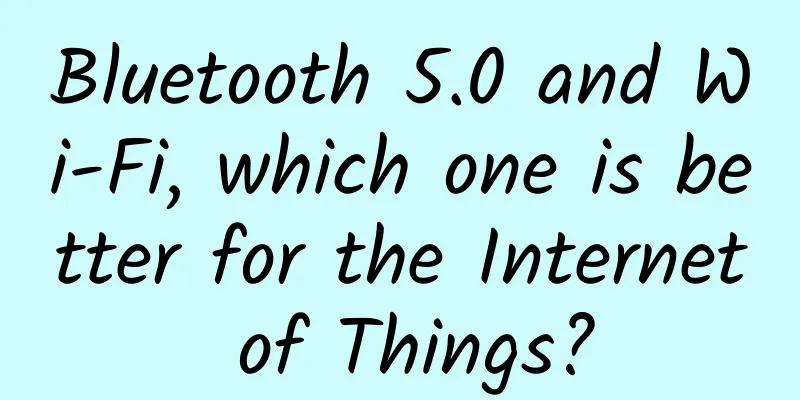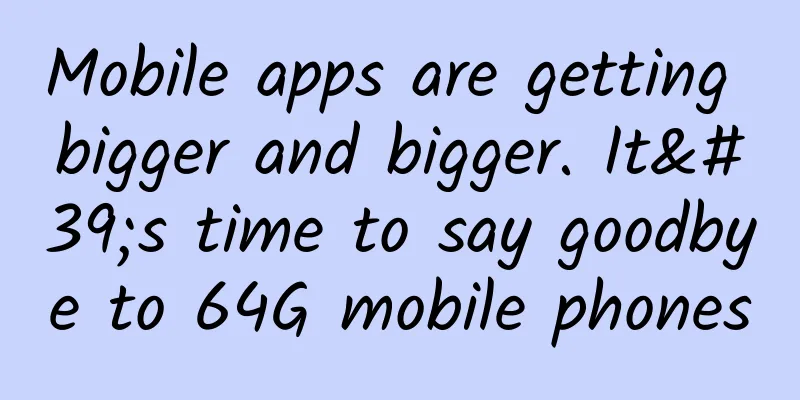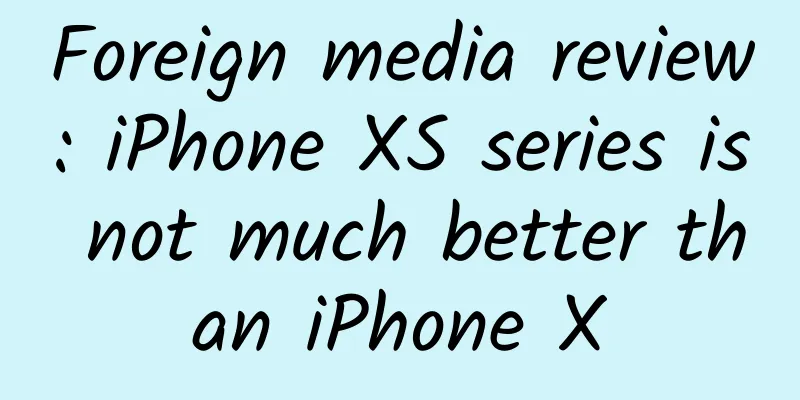Bluetooth 5.0 and Wi-Fi, which one is better for the Internet of Things?

|
The Bluetooth SIG’s announcement of Bluetooth 5 is one of the biggest events in the IoT in 2016. Leifeng.com previously introduced the features of Bluetooth 5 in detail, including its amazing four times connection distance and twice transmission speed. Such a huge improvement naturally has its strategic intention - to compete with Wi-Fi for the throne of IoT wireless data transmission protocol. Previously, Bluetooth and Wi-Fi had their own advantages: Bluetooth has lower power consumption, small size, and low cost, and is suitable for short-distance data transmission between several devices; Wi-Fi is characterized by high bandwidth, long distance, and more connected devices (different routers have different upper limits on the number of connected devices), and is suitable for large-scale, wide-range data transmission and signal coverage. However, with the popularization of the Internet of Things, Bluetooth and Wi-Fi have been upgraded one after another, and both have entered the same battlefield - Bluetooth has been upgraded to version 5, which has improved bandwidth and transmission range; Wi-Fi has launched "Wi-Fi aLow" to reduce power consumption and extend battery life. A discerning person can see that the focus of the upgrade of the two is what the other party is good at - this means that the functional positioning overlaps, and there is no doubt that they will compete head-on in the consumer and enterprise IoT markets. Home IoT Bluetooth 5 has improved signal coverage - it is said to cover the entire apartment, which is comparable to the data transmission distance of home Wi-Fi routers, and even better than the rapidly popularized 5GHz home Wi-Fi. If we only look at this parameter, the two have officially stood on the same level in the application of home IoT devices. It should be noted that since Bluetooth uses the 2.4GHz frequency band, in order to reduce signal interference, more users are likely to choose 5GHz band Wi-Fi instead of 2.4GHz. However, Bluetooth 5 is superior in transmission distance. Therefore, in the future home IoT devices, it is likely that the following scenario will appear: users use Wi-Fi for devices with high data traffic demand (mobile phones, computers, etc.), while the rest of the smart home devices use Bluetooth. Of course, there are two problems involved here: 1. Users who use 2.4GHz Wi-Fi will abandon Bluetooth 5 due to the risk of signal interference; 2. Various Wi-Fi signal relay amplifiers (or boosters) are available on the market, and users can use a roundabout way to enhance Wi-Fi signals and cover the entire apartment. Let's see how the Bluetooth Technology Alliance solves the above problems: 1. When Bluetooth 5 was released, the Bluetooth Technology Alliance stated that the new version of Bluetooth has stronger anti-interference capabilities, especially for Wi-Fi and LTE signals, which can avoid "signal jams" in limited spaces to a certain extent. 2. The developing IoT mesh networking technology. This technology enables Bluetooth devices to act as signal relay stations for each other and transmit signals farther. In fact, with mesh networks, each Bluetooth IoT device is equivalent to a signal relay amplifier for other devices. It is worth noting that: - It is unknown when this technology will be commercialized, and it is expected that there will be little hope in the short and medium term. - The cost is unknown. This will directly affect whether the IoT devices on the market will support it. If most do not support it, its role will be small. - Mesh network technology is not limited to Bluetooth, and in theory it can also be applied to Wi-Fi and mobile phone signals. Enterprise IoT Consumer (home) IoT devices are a major battlefield for Bluetooth 5 and Wi-Fi in the future, and they are evenly matched. In the enterprise IoT market, Bluetooth has even gained a first-mover advantage. This is mainly reflected in two aspects: 1. According to market research by a third-party agency, Bluetooth has become the most popular IoT wireless protocol (as shown below), while Wi-Fi's market share is far behind, and the third place is the dedicated IoT wireless standard Zigbee. 2. Products equipped with Bluetooth 5 will be released in 2017, and Wi-Fi HaLow for the enterprise IoT market is expected to be released as early as 2018.Table 1: Application of various wireless transmission protocols in the Internet of Things (red bar) and non-Internet of Things (yellow bar). Purple bar is for industrial applications (Source: iottechnews) Bluetooth's current lead mainly relies on its small size and energy consumption advantages. Quite a number of IoT devices, such as sensors and wearables, are very small in size and have very limited battery capacity, and repeated charging is a very troublesome thing for us humans. Bluetooth receivers are not only small in size, but also save 25% to double the power of Wi-Fi devices - this is very important for small IoT devices without external power supply. For this Bluetooth 5, the Bluetooth Technology Alliance did not disclose its energy consumption. However, most industry insiders are optimistic that it will not be much different from the existing Bluetooth 4.2 in power consumption, and even have optimization. On the Wi-Fi side, the new Wi-Fi HaLow uses a 900MHz signal frequency, which greatly reduces power consumption, and adds a "sleep mode" to further extend the device's battery life. In addition, lower frequencies also bring better wall penetration capabilities, further improving signal coverage. It can be seen that Wi-Fi HaLow is no less advantageous than Bluetooth in IoT devices. If it is successfully popularized, the odds of victory and defeat are likely to be reversed. However, Wi-Fi HaLow currently faces several challenges: 1. Progress is slow and it is still in the standard-setting stage. Whether it can be released on time in 2018 is still unknown. 2. The data packaging method of the 900MHz band is relatively special, requiring another set of infrastructure, which is incompatible with existing Wi-Fi networks. This means that companies need to update their equipment to manage Wi-Fi HaLow. 3. In some countries in Europe, Asia and Australia, 900MHz is not open to civilian use. However, it is not just Wi-Fi that has launched a new version. In fact, Bluetooth has already had two versions: the "classic" version with relatively high energy consumption but better effect; and the low-energy "BLE" version - most smartphones use this version. The timely launch of Bluetooth 5 provides a better combination of transmission speed, distance, energy consumption and cost. According to Leifeng.com, Bluetooth 5 is equivalent to the energy consumption of the "BLE" version and the effect of the classic version, which means a better energy efficiency ratio. Whether this is true or not remains to be tested after the product is launched. Therefore, in the foreseeable future, Bluetooth will continue to lead the IoT market. The following figure shows the wireless solutions that developers are expected to adopt in the next 12 months: Table 2: Developers' expectations for the adoption of various wireless transmission protocols in the next 12 months. IoT (red bar), non-IoT fields (yellow bar), industrial applications (purple bar) (Source: iottechnews) Although Bluetooth has taken the lead, in the long run, the outcome of the IoT between Wi-Fi and Bluetooth is still unknown. How this century-long battle for wireless transmission protocol will end, we will have to wait and see. As a winner of Toutiao's Qingyun Plan and Baijiahao's Bai+ Plan, the 2019 Baidu Digital Author of the Year, the Baijiahao's Most Popular Author in the Technology Field, the 2019 Sogou Technology and Culture Author, and the 2021 Baijiahao Quarterly Influential Creator, he has won many awards, including the 2013 Sohu Best Industry Media Person, the 2015 China New Media Entrepreneurship Competition Beijing Third Place, the 2015 Guangmang Experience Award, the 2015 China New Media Entrepreneurship Competition Finals Third Place, and the 2018 Baidu Dynamic Annual Powerful Celebrity. |
<<: Do you think the official version of iOS 10.2 improves iPhone battery life?
>>: People who use social media more frequently are more likely to be depressed and anxious
Recommend
I've already gotten the flu vaccine, so why did I still get the flu?
Vaccines are one of the greatest contributions of...
Google releases Fuchsia specification for its non-Linux operating system
Google has revealed details of its non-Linux oper...
Revealing the secrets of Tik Tok’s genes and the authenticity of Tik Tok influencers’ traffic!
There are cracks in everything, that's where ...
In 2023, these rockets will be on a mission, come and take a look!
On January 9, the Long March 7A rocket Sent on th...
How does Tik Tok make you addicted?
The world of short videos has never been peaceful...
Analysis of the operation of private e-commerce package cards
Nowadays, if you want to build a brand, you can&#...
2019 New Version of Taobao Express Hot Selling Tutorial for Beginners
Chapter 1: Learning Taobao Express from scratch 1...
The ultimate horror experience TV version of "Dead Effect" review
Screen: Sound Effects: operate: Plot: Experience:...
This wave of "childish talk" really made me laugh to death, but why are childish talk so funny?
As the saying goes, "children speak without ...
Estimation of bandwidth size for renting a server for live video streaming website
Live streaming, a large-scale social application ...
Want a “screen-sweeping” promotion for NetEase Music? Here are 8 ways
Why does the traffic increase when users are mock...
Shen Yi: The Protagonists in the White House
Lecturer Shen Yi Introduction Professor of Intern...
Why did McDonald's close 200 stores? How many McDonald's stores are there in the Chinese market?
McDonald's closes 200 stores On July 28, McDo...
Advertising strategies for the Internet automotive industry (Part 2)
In the above article "Advertising Strategy i...









